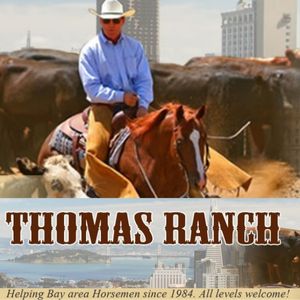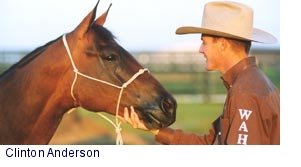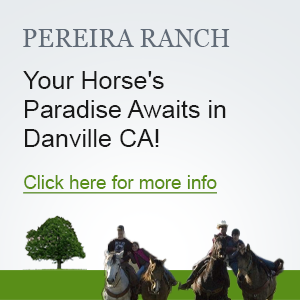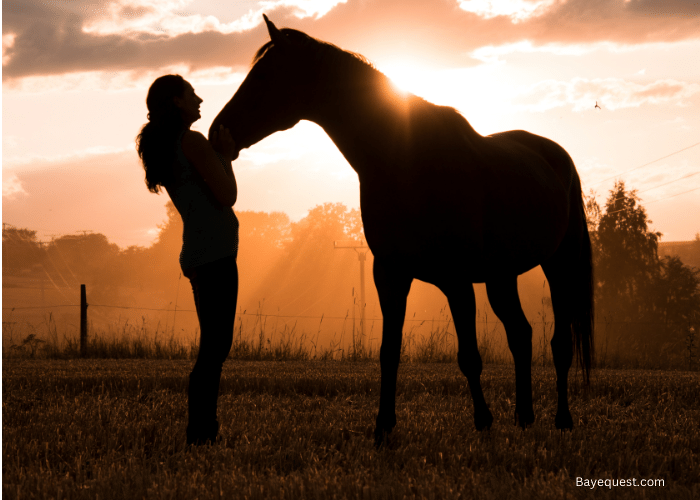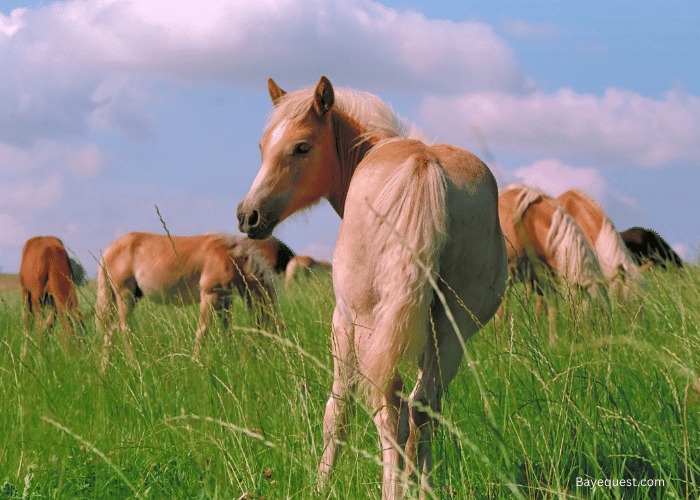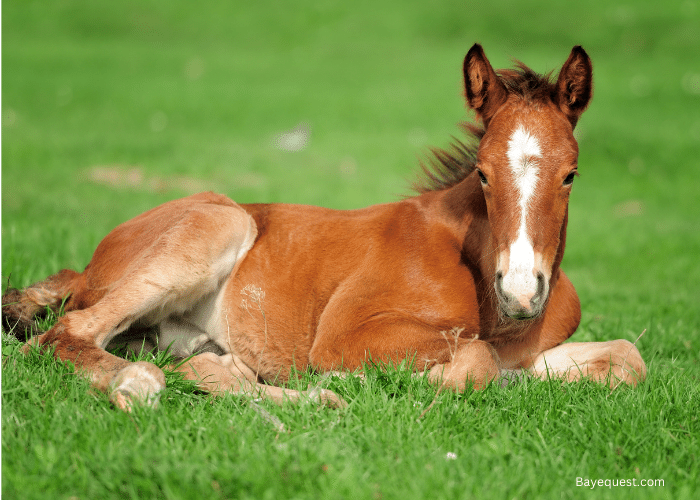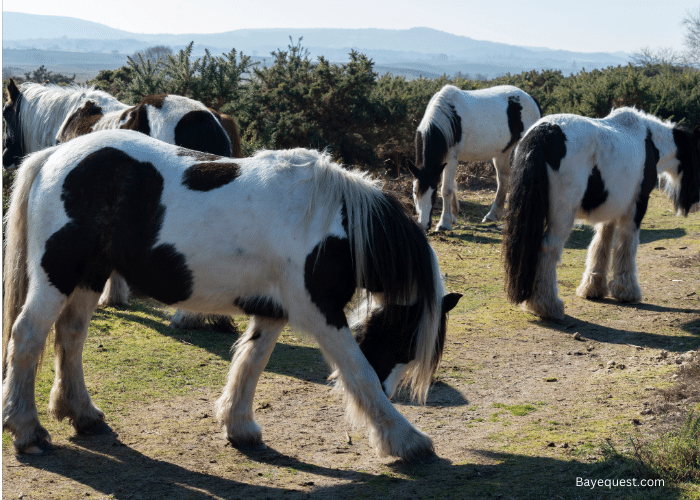I learned to ride English at age 7, and at age 11 learned to ride western. Since those early days, I have taken numerous lessons and classes, worked with many horses, worked with many people, read many books, viewed many videos, and entered many competitions from Dressage to Gymkhana. Never a famous champion, sometimes in the ribbons, and always seeking improvement, that’s why I enrolled in a three-day Clinton Anderson Downunder Horsemanship Clinic in Feb., 2004.
I first met Clinton Anderson at a five-day clinic in Ione, Ca. (Nov. 1999). I have followed his career ever since. Clinton Ander-son is the youthful Australian equestrian who has developed Downunder Horsemanship?. He qualified for the Australian National Polo-Crosse team when he was 15, studied with great Australians and Americans such as Gordon MacKinlay, Ian Francis (Three-time Australian futurity champion in reining, two-time champion in cutting), Al Dunning (Multiple AQHA World Champion), Sam Smith and (International Reining Judge). In 1997 he placed third in the Australian National Reining Futurity, on Pillimindi Doll, Mindy, a mare that he trained from a weanling. He pioneered the use of television to promote his training methods, being the first national trainer to have a weekly series on RFD-TV. He still competes in the (U.S.) National Reining Futurities, and recently won the two-day, El Camino del Caballo colt starting challenge in Fort Worth, Texas, at Cowtown Col-iseum. He keeps a very busy schedule, holding clinics around the United States as well as at his home at the Wahl Eques-trian Center, in Sterling Illinois. He has been both on the cover of and a featured writer for Horse Illustrated (July 2000) and Horse and Rider Magazines (Dec. 2003). He has produced numerous videos on topics from Lunging for Respect to Riding with Confidence. For more details about Clinton you can see his web site, www.clintonanderson.net.
A few days after my clinic, Clinton was kind enough to give me an interview. The questions I asked him were for an article for the American Riding Instructors Association www.riding-instructor.com quarterly publication. I told him this was a publication for people training people versus training horses and asked did he see any differences between the tasks.
When you know what to do, training horses is much easier. You just have to do your job right and the horse will usually get it. Training people is much more difficult, because even if the person understands what to do, they may not necessarily do it. So you have to repeat [your instructions] and go over and over it. People have different issues that they don’t want to let go of, past issues, fear and confidence and all these other things. So if you’re asking me, yes, training people is much harder, much more difficult than training horses.
I asked him the attributes of his public and primary customers. My primary customer is a middle-aged woman, between 40 and 50 years of age. [Their] kids are out of high school, usually they’re a baby boomer–kids are out of college, they are recreational riders, trail ride. They love their horses. They would like to get along with their horse better and feel more safe and confident when they ride and on the ground. If the women I spoke with at his clinic are an example, many of them had already had accidents both on the ground and riding. Many of them wanted a method that was quickly effective and easily applied. That is why they became interested in his methods. Not because he says it is easy, but because he is so effective. I asked him what he thought the instructor’s primary focus should be to ensure the rider’s success, defining success as the rider’s safety, doing the things they want to do and gradually achieving their goals.
The Instructor needs to make sure that the student knows how to do a one-rein stop at all three gaits, that’s [the] emergency hand brake. That way, in any situation that the rider feels insecure, the rider knows how to get back in control or at least get the horse to stop so they can get off, one of the two. [The Instructor] needs to be concerned with teaching that person how to have some confidence, and get control of their horse on the ground and in the saddle. The series of exercises on the ground and in the saddle will teach that rider how to get control, which in turn will build confidence, which in turn will get rid of their fear.
Of fearful riders he says, … they’ve got to get safe and confident on the ground. Don’t put them on the horse until they feel safe and confident on the ground. And then when they get on, make sure you teach them the one-rein stop, because that is what is going to keep them safe if things start to get out of control. Does he have any tips for teaching the over confident rider; riders with the attitude that than can perform a particu-lar skill when in fact, they can not? He says to tell the student, … you need to listen to what I have to say. If you don’t agree with it, that’s fine, you don’t have to come back for another lesson. But, if you are here for a lesson, you need to do what I tell you to do and respect what i’m saying because I’m trying to help you. His tone is very matter of fact, and not puni-tive. If you don’t want to do that, you won’t hurt my feelings but this is the last lesson we are going to have together. He seems to believe that honesty is the best policy when he says, Because, otherwise you’re just wasting your time and their money. How about the clueless parent who thinks that their child should be jumping just because the child went to summer camp last year? He says, Sit down with the parents before the lesson starts and say.’listen, there is only one teacher in this group and it’s me. if you are watching your child get a lesson, I don’t want to hear boo out of you.’…because, as soon as you, start telling the kid what to do, the kid starts arguing back with you. I’m the one teacher, I’m it. If you have an issue with what’s going on you talk to me after the lesson or before the lesson and you and me can talk about it. But there is only one teacher.’ As far a parent putting pressure on the kid, you need to explain to the parent, if the kid doesn’t want to do, the kid doesn’t want to do it, end of story. The relationship is between you and the student, if there is a problem the student and the parent can come to you before the lesson or after the lesson, but during the lesson you should be the only one that talks Of course, the student may ask questions during the lesson, but you should be the only one teaching.
His answers come quickly, such that you know he has already thought through these issues and dealt with these scenarios. He is very clear of purpose, and often describes himself as very black-or-white.
In my experience students, instructors, horses and relationships between them are not black-or-white. An analogy I use teaching and training is that life is are like a prism. We each have different and unique experiences of the world. Each role that we live is a slight rotation of the prism, yielding different hues, different perceptions, clarities, distortions and realities.
There are some fundamental issues with a student that are black-or-white. If you have a contract, the terms of the contract are black-or-white. Fees, length of lessons, business hours and facility rules are issues that should be black-or-white, but, are they?
I have an invoice outlining my services and my fees. When clients first come to me for business, I give them an orientation, go over release forms, facility rules, fees and services and explain my version of a-to-z about horses. I have a mailbox in my office and invoice forms next to the box. Clients can circle their services on the invoice and pay me. Pretty black-or-white, huh?
What happens when lessons or training sessions go overtime, when we are just about finished with our 45 or 50 minutes and the client or horse are very near a training milestone? Or, a car backfires outside the arena, the horse starts and the student becomes frightened and jumps or falls off. Suppose a boarder has an accident and you can’t start your student’s lesson on time? Let’s say this it is a day that no one is waiting for you, and your student’s grandparents are visiting from Europe. They get lost on the way to the stable arriving with the video camera, just in time to watch an assistant lead the horse back to its stall.
Haven’t we been taught to always end a lesson or training session on a positive note? What if we are ending and it is appar-ent the client or the horse is upset and not relaxed? What if just a few more minutes makes the difference between a positive note and a flat note. For me, these are the grey areas of doing business. I do not have an over-time slot on my invoice. I do not bill in 5, 10 or 15 minute increments. Overall, I try to keep to a schedule. I assign people times and I make and keep appointments. I try to be objective, I have exercises where I use a timer to measure milestones in strength and ability, but I do not feel right about being so stringent, so black-or-white, that I can not make allowances.
What happens when a client continually pays late? What happens when clients always bring up important issues at the end of training? What happens when the service cost is on the invoice and the client complains that the charge is excessive? What happens when a client announces she is pregnant in the middle of the month, and the contract says no refunds? What happens when a client cries and you give them a hug?
I will tell you what happens. Feelings happen. People become happy, sad, afraid, angry, resentful. When clients are happy, we do not worry about the black-or-white. When the check shows up in the box and the client is happy, laughing, smiling and planning for the future, we assume everything is fine. When we ask the client, Now that you have learned some new skills, are there more or different things you want from me? When the client says no, we assume that things are going as planned. But, when clients have a bad day, or when you have to be honest and tell them you think they are taking too much risk, or that their horse doesn’t have a sore back or sore leg when it takes the wrong lead; they need to ride and bend the horse correctly and it will take the proper lead. When you point out that there is a pattern of bringing up issues at the end of the lesson or that there seems to be a pattern of late payment, no matter how you present or communicate — feelings happen. No matter who you are, or who your clients are or how black or how white, it comes down to being able to share what we are thinking and feeling; what we want and what we need. Sometimes, people do not know or are not aware of their needs and feelings. Feel-ings, thoughts, wants and needs are dynamic and nebulous, not black-or-white.
When we are in-debt, we are in the red, when we feel fine, we are in the pink, when we are sad, we are blue, when we don’t feel well, we are ashen. We become green with envy, someone has a yellow belly, and an inexperienced horse or rider is green.
There is an attractiveness to black-or-white, either this way or that, right or wrong, fair or unfair. If people or horses were so simple we could have constant success, quickly and easily, by matter-of-factual and simply choosing only the black or only the white. We would never have to make a mistake, never have to feel like we failed, never have to feel incapable, never feel frustrated or impatient, never feel angry or hurt.
However, training people or horses isn’t that simple, there is no substitute for time and commitment, exposure and experience, effort and struggle, honesty and judgment. At best, our relationships with our clients or with our horses is a continuum, a varying degree of comfort or discomfort. At best, when we evaluate these relationships sometimes there will be bad days, sometimes there will be joy and simple pleasures, but most of the time there should be satisfaction with our overall progress. Being black or white is way to be consistent about learning to read between the lines and judging each situation and experi-ence as the unique, colorful learning opportunity that it is.



